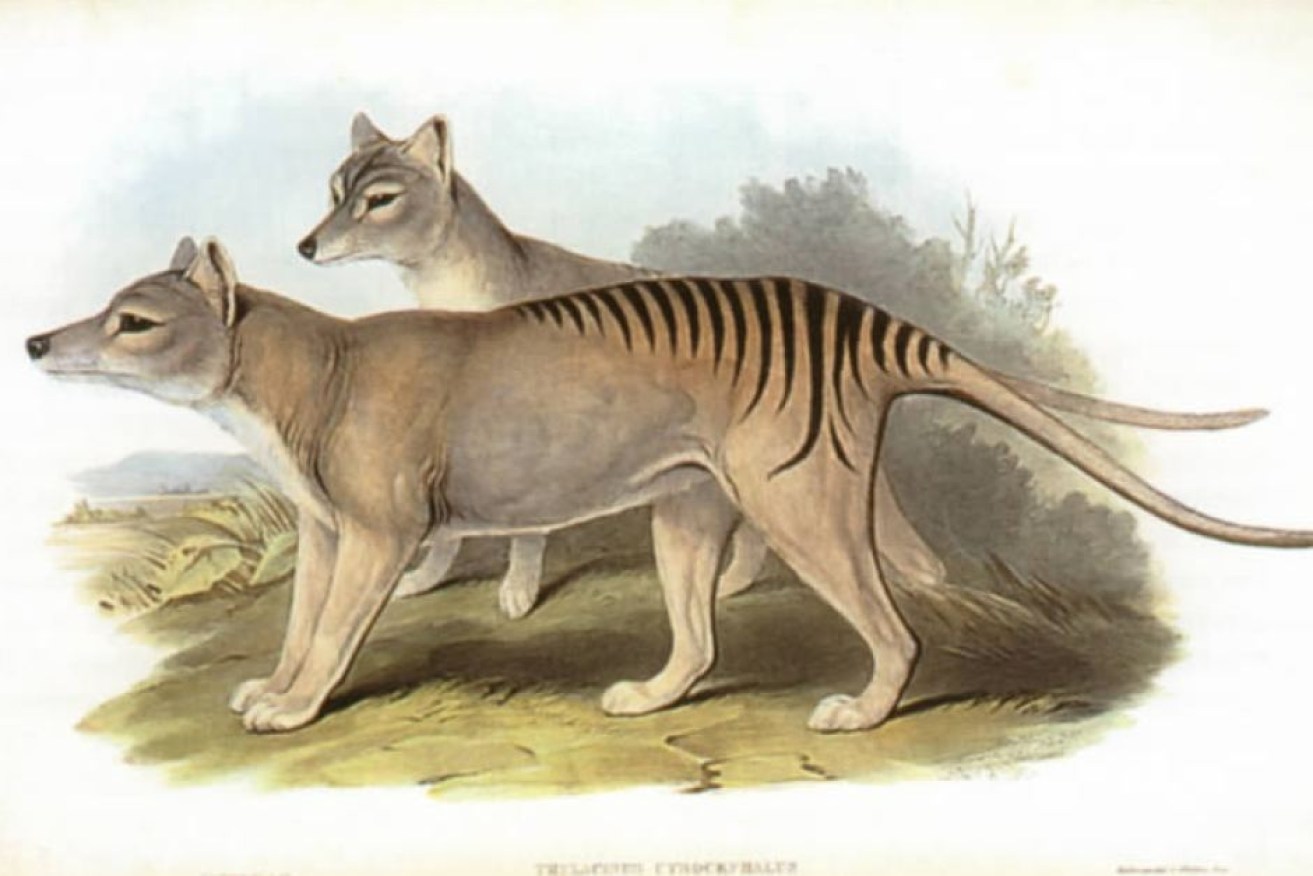Tasmanian tiger discovery: What we got wrong about Australia’s famous extinct thylacine


It turns out much of we thought we knew about the Tasmanian tiger simply isn't true. Photo: Wikimedia Commons: John Gould
The thylacine, better known as the Tasmanian tiger, is a tragic and enigmatic creature in Australia’s history, having been hunted to extinction nearly a century ago.
The last thylacine died in captivity in 1936, but the public fascination with the long lost species has remained alive.
Researchers have continued to mine the past for clues about the thylacine, which was one of Australia’s largest apex predators to survive into the modern era.
Now scientists from Monash University have discovered the marsupial (mammal with a pouch) would have looked quite different to what was previously thought.

The last thylacine died in 1936. Photo: Tasmanian Museum and Art Gallery
The research shows that the Tasmanian tiger was much less intimidating than its name suggests, and was the size of a small dog rather than a wolf.
Using advances in 3D analysis, the study by Monash University’s Biomedicine Discovery Institute and School of Biological Sciences, showed that the thylacine weighed around half what was previously thought, clocking in at about 17 kilograms on average.
The researchers combined traditional measurement techniques with advanced 3D scanning and volumetric methods, and the largest database of museum specimens that spans 6 countries and incorporates 93 individual thylacines.
Previously, thylacines were most commonly estimated to weigh about 29.5 kilograms, and the findings “substantially revise how we understand its biology and role in Australian ecosystems”, the researchers said.
Once thought to behave more like wolves – hunting in packs for prey larger than themselves – the new findings instead suggests that thylacines preyed on much smaller animals.

Thylacine mesh models. Image: Douglass Rovinsky
“Rewriting the thylacine as a smaller animal changes the way we look at its position in the Australian ecosystem – because what a predator can (and needs to) eat is very much dependent on just how big they are,” lead researcher Dogulass Rovinsky said.
Many of the 19th century newspaper reports just might have been ‘tall tales’ – told to make the thylacine seem bigger, more impressive … and more dangerous!”
The researchers established that there were strong differences in the average male and female body size, with the male mean of 19.7 kilograms and female mean of 13.7 kilograms. The mixed-sex population mean of 16.7 kilograms is then well below the 21 kilogram threshold for predators likely to take large prey.
Despite extinction in the 1930s and film footage, the species is a true enigma, with almost no direct observations supporting an understanding of their behaviour and biology.
“We wish we could watch just how the thylacine hunted, and what sort of prey it could take – this is our closest look yet at an essential ingredient of the predator’s behaviour, how big it really was,” research supervisor Associate Professor Alistair Evans said.
Could the Tasmanian tiger come back from extinction?
In an incredible feat of science, the extinct thylacine’s entire genetic blueprint, or genome, was sequenced in 2017 by an international team of researchers led by scientists from the University of Melbourne.
It is one of the most detailed blueprints ever recorded for an extinct species, with researchers able to obtain the genome from the preserved specimen of a 106-year-old pouch-held young animal.

A thylacine at Tasmania’s Beaumaris Zoo circa 1930s. Photo: National Museum Australia
The research team used cutting-edge techniques to extract DNA and sequence the genome of this juvenile thylacine.
“Our hope is that there is a lot the thylacine can tell us about the genetic basis of extinction to help other species,” Project leader Associate Professor Andrew Pask said.
“As this genome is one of the most complete for an extinct species, it is technically the first step to ‘bringing the thylacine back’, but we are still a long way off that possibility.”








